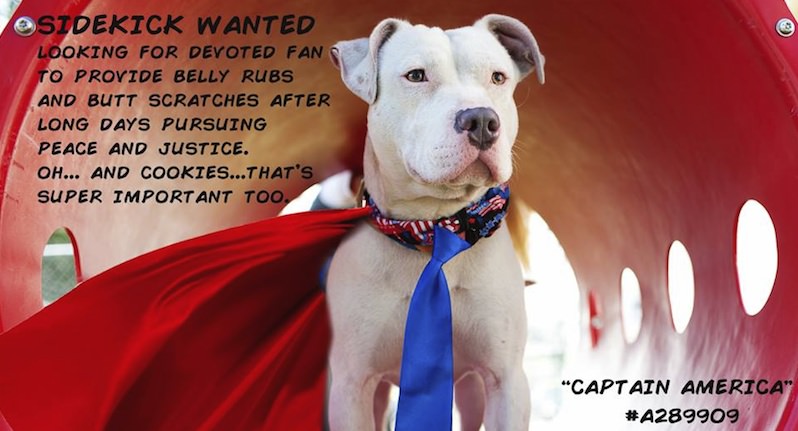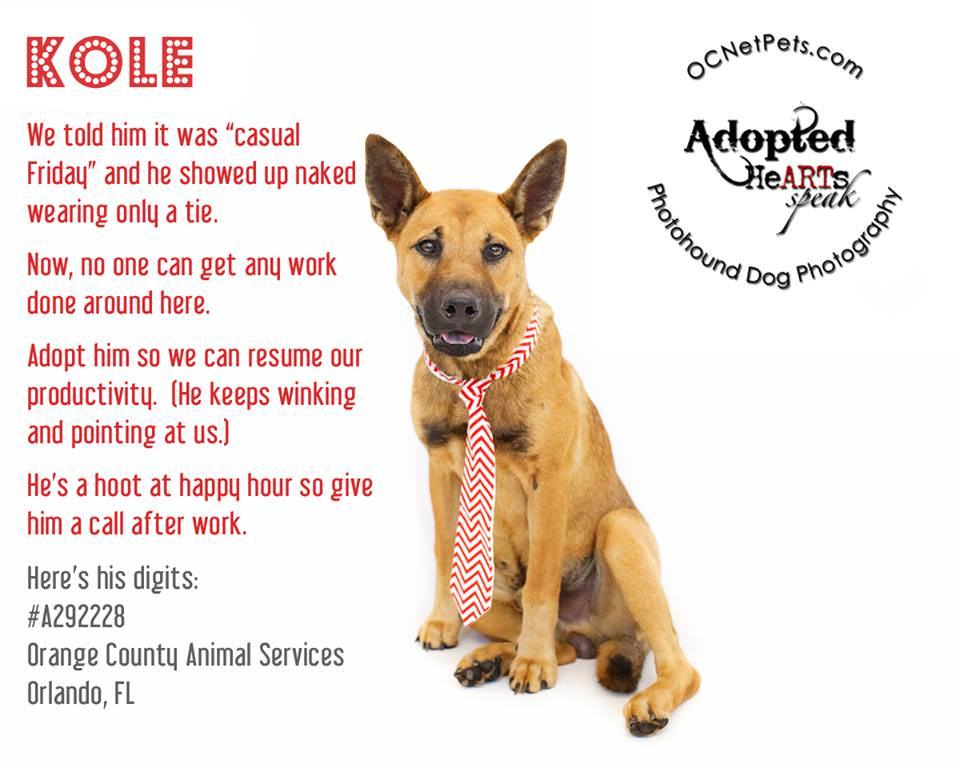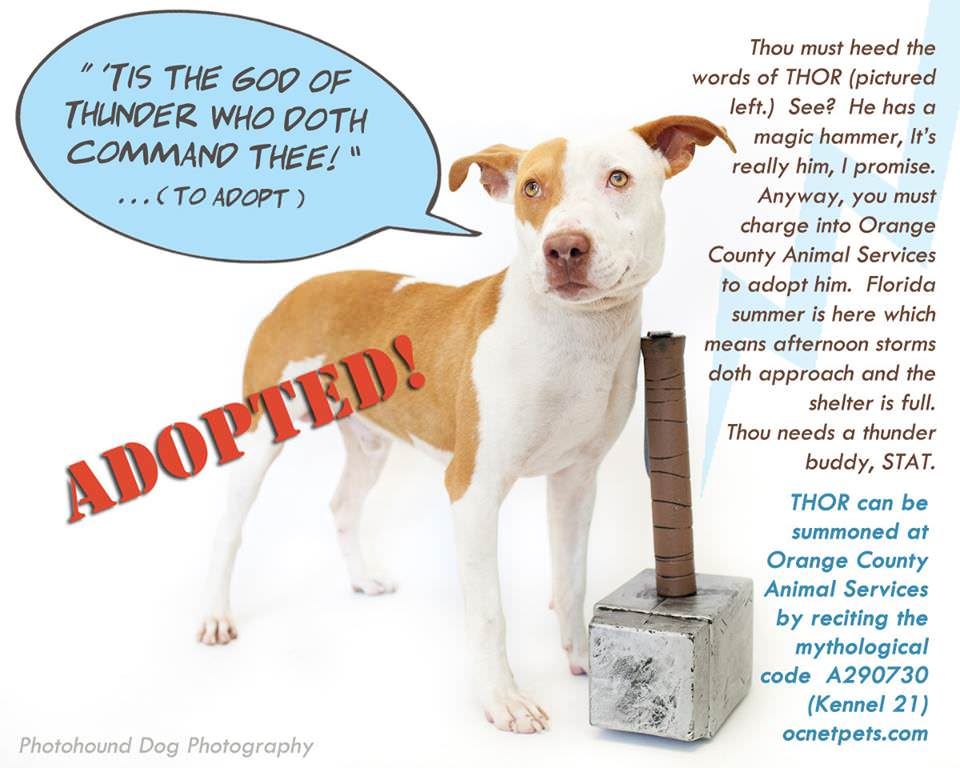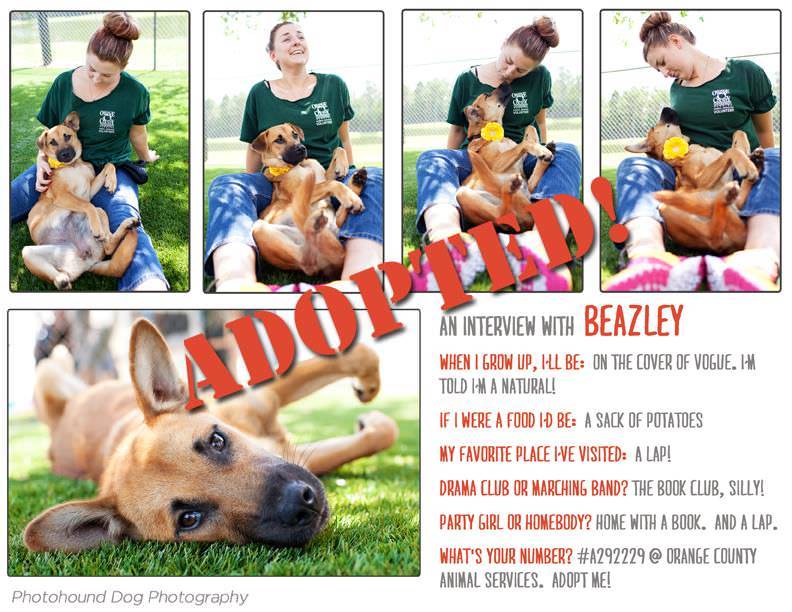 A quality photograph is worth its weight in gold for an adoptable animal, but an effectively written bio to accompany it is the juicy cherry on top.
A quality photograph is worth its weight in gold for an adoptable animal, but an effectively written bio to accompany it is the juicy cherry on top.
There’s no denying that words are a powerful vehicle for generating emotional connections; just think of your favorite piece of poetry or famous quote. A few thoughtfully selected words strung carefully together can move a person, or an entire generation, to action.
Here are some tips to consider while you’re weaving a winning profile for a pet.
- ACCENTUATE THE POSITIVE
 Start with the good stuff. Stick with it. And always come back to it if you find yourself veering to the dark side.
Start with the good stuff. Stick with it. And always come back to it if you find yourself veering to the dark side.
While potential adopters appreciate knowing (and should be informed of) the facts on both ends of a pets adoptability spectrum, they’re ultimately looking for a reason to love a pet. They want to make a connection. Highlight the reasons a pet will be a wonderful addition, and the right home will be granted the chance to make a connection. The door is ajar and an upbeat, positive bio marches right on through with great photos in tow.
- GET OUT OF THE GLOOM
 No matter what sort of environment or experiences a pet originated from, an adopter is forming a connection with what that animal offers now.
No matter what sort of environment or experiences a pet originated from, an adopter is forming a connection with what that animal offers now.
The fact of the matter is that the average adopter is unlikely to adopt a pet purely because they feel sorry for it. Sad stories may generate donations and volunteers, but they’re far less useful in finding the pet in question an actual home. Keep fundraising efforts separate from a pets bio. In addition, consistent negative details serve to fuel the misconception that all shelter pets are damaged in some way.
To that end, avoid building a pets entire representation around a dark past or speculation about previous owners. It’s human nature to avoid that which causes feelings of sadness, fear or confusion, and adopters are searching for a happy experience that will provide them with a lifelong companion. When sadness is the primary focus, a wall is built and it’s difficult for a true connection to be made beyond the initial pity.
You might go so far as to work some humor in there, à la Photohound Dog Photography, whose images are featured throughout this post. People like to laugh. It breaks the ice, helps us relax, and is a universal language; all things you want at the start of the adoption process.
That being said, a pet’s past is something adopters will always be curious about. Mention it if it’s relevant, or allow the shelter/rescue to provide those details in person. Just make it part of the pet’s life, not the sum.
- FIND THE GOOD IN THE BAD
 When deciding how to tactfully address Fluffy’s missing eye, luxating patella, undiagnosable skin condition, or propensity for hoarding pistachio shells, avoid launching into a bulleted list of unsavory details. It’s a surefire way to shut down interest and an adopter may not be able to look past those items.
When deciding how to tactfully address Fluffy’s missing eye, luxating patella, undiagnosable skin condition, or propensity for hoarding pistachio shells, avoid launching into a bulleted list of unsavory details. It’s a surefire way to shut down interest and an adopter may not be able to look past those items.
However, peppering the ‘good’ in with the ‘bad’ will alleviate some of the weight of each issue, encouraging an adopter to see each one for what it is: a manageable condition.
When addressing any disadvantages, try writing as though you’re discussing your own beloved pet’s health or behavioral problems. You’ll automatically write from a place of love and it will resonate with a reader. Everything is fodder for positive perspective. A little on the chubby side? More to love! Senior? Time to retire and reflect on a life of achievements. Uncomfortable with being handled? Parties best with the grown-ups.
- UNCOVER COMMON GROUND
 Even the smallest detail about a pet’s personality can become a delightful quirk that hooks an adopter. In rescue it can be difficult to know a pet well before a bio is necessary, but a mere two minutes in the same room as your subject can unveil a wealth of juicy bio tidbits.
Even the smallest detail about a pet’s personality can become a delightful quirk that hooks an adopter. In rescue it can be difficult to know a pet well before a bio is necessary, but a mere two minutes in the same room as your subject can unveil a wealth of juicy bio tidbits.
Does the pet know any commands? Adopters love to hear about these because it shows a pet can be a polite member of a family, and that someone loved them enough to train them. If someone else can love them, they can too.
Is the pet hyperactive, or seemingly untrained? No problem! Identify their favorite variety of toy or treat. Discover what motivates them and you’ve built a bridge between them and an adopter.
- SHORT IS SWEETEST
The ultimate goal of your bio is to entice an adopter to come into the shelter to meet a pet in person. Photos and bios are essential groundwork, but the deal is sealed in person. Keep your bio brief and to the point. Try breaking the text up into bullet points, smaller paragraphs, or overlay factoids on an image for easy digestion.

As with your favorite famous quote, your words have more power than you may realize as you’re penning them. Always consider what your message communicates, not only for that particular animal, but also for homeless pets as a whole. Remain conscious of what subtle effect your words may have on a potential adopter, and assess where your message is directing their attention.

